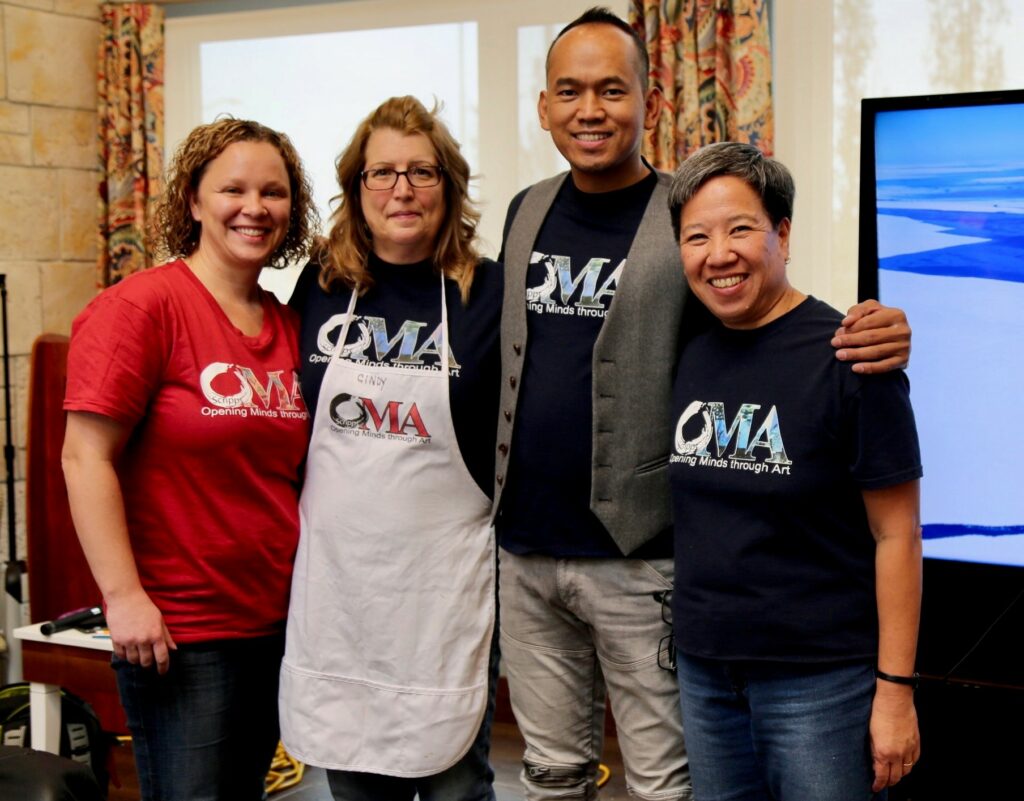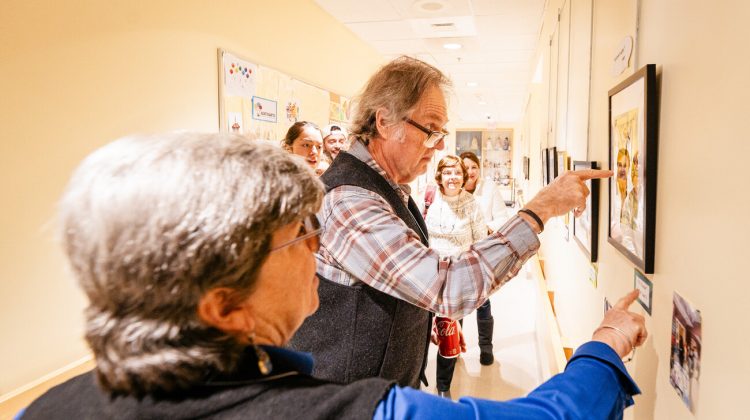Ten Year Reflection
By Elizabeth “Like” Lokon, Ph.D., OMA Founder

A decade has gone by since I started the OMA program. During this time the program has grown tremendously, thanks to Scripps Gerontology Center’s support for OMA and Miami University’s recognition of its value to the students.
THE NUMBERS: Over 1700 Miami University students have gone through the program locally and over 100 facilities are now offering OMA in North America (79 in USA, 25 in Canada). This translates to thousands of students and people living with dementia who have benefited from the OMA program. We are now working on our 6th publication documenting research findings on these benefits.
OMA TRAINING: We have also developed three levels of training. At the first level, the OMA volunteer training program has trained volunteers to be patient, compassionate, and open toward people who have dementia. At the second level, the OMA facilitator training program has trained 355 aging professionals and artists to conduct the program. Both online and in-person training formats are available. At the third level, we have certified four people who can train other facilitators. They have successfully conducted training sessions in St. Louis, MO and Richmond, VA. Soon, we will have another training center in Calgary, Canada.
OMA ONLINE RESOURCES: Thanks to funding from the Ohio Department of Medicaid, we are able to do a major make over on our website. Now, it is easier to find OMA video, gallery, blog posts, and even an OMA store. As an OMA trained facilitator, you can find even more resources on the website that are not accessible to the general public. All of OMA training videos, teaching manual, Power Point slides, templates for invitations, data collection, and more are available on the new website. We now have OMA art project videos along with instruction handouts and list of supplies on the website for trained facilitators to purchase.
We have come a long way in these ten years and we hope to continue to fulfill our mission of using art to build bridges across age and cognitive barriers in the next decade.






